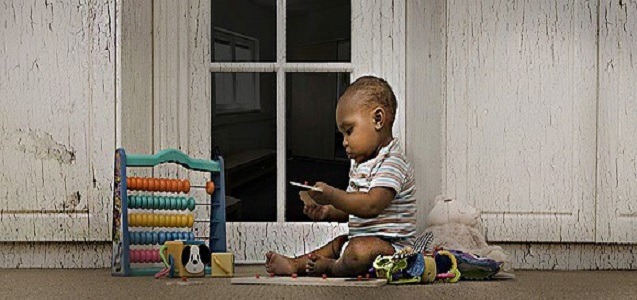At The Yost Legal Group, Baltimore Injury and Medical Malpractice law firm, we have represented hundreds of clients dealing with the lingering effects of lead paint poisoning in their children and loved ones. Exposure to lead paint has been indisputably linked to multiple mental and physical developmental ailments that can prove especially harmful to children. Symptoms of lead paint poisoning include:
- Decreased IQ
- Dramatic decrease in attention span and hand-eye coordination
- Loss of short-term memory
- Stunted growth, decreased muscle mass and chronic muscle pain
- Hyperactivity, ADD, ADHD, increase in aggressive and/or antisocial behavior
By now, the dangers associated with the use of lead paint are well-known and well documented by all medical professionals. For this reason, the use of lead paint in residential homes was banned by federal law in 1978. However, every year we still hear stories about the lingering effects of this dangerous and toxic substance and the impact it is having on members of our most vulnerable communities.
One 1999 study found that Baltimore city is home to the highest rates of lead paint poisoning among children in the United States. 93,000 children with lead poisoning have been added to the state’s Department of the Environment lead registries over the past two decades. These are key facts to remember when attempting to digest and contextualize the civil unrest that gripped Baltimore following the death of 25-year-old Freddie Gray, who died on April 19th, 2015, a week after he was first taken in to Police custody.
The Life and Times of Freddie Gray
Back in 2008, Gray and his siblings filed a lead-poisoning lawsuit against the property manager of the Sandtown-Winchester neighborhood home where he and his family grew up. The suit resulted in a settlement on behalf of the Grays, who demonstrated that Freddie and his siblings were exposed to an extremely dangerous amount of lead paint very early on in their lives. In fact, when Freddie was only 22 months old, medical tests revealed that his blood contained 37 micrograms of lead per deciliter of blood. It is currently believed that a reading of only 5 micrograms of lead per deciliter is enough to cripple a child’s cognitive development.
Unsurprisingly, Freddie, his twin sister Fredericka, and an older sister, were all diagnosed with ADD, ADHD and aggressive tendencies nearly the second they were introduced into public schools. Their constant battle with this illness, which all too often goes unrecognized by teachers, parents and guardians, made education and normal childhood development a struggle for Freddie and his siblings.
According to many experts on the subject, these are precisely the types of developmental struggles that make it extremely difficult for impoverished African-American families to break free of the cycles of violence, drug abuse and criminal behavior that have plagued their communities for decades.
The Legacy of Lead in Baltimore
Tragically, entire communities are being forced due to financial constraints to live in low-income areas where homes and apartments are not properly inspected by housing or public health officials. A disproportionate amount of these homes still contain high levels of lead paint almost 40 years after it was originally banned.
In higher income neighborhoods in either the City or Baltimore County, even a trace amount of lead paint would necessitate immediate action from public health officials, rental and homeowners associations, and even politicians.
However, when the most impoverished members of our society are forced to deal with these struggles for decades, the problem is either ignored, swept under the rug or outright denied by the companies and property owners that are too concerned with turning a profit to bring their structures up to code.
Ruth Ann Norton, the executive director of the Coalition to End Childhood Lead Poisoning, recently told the Washington Post that “a child who was poisoned with lead is seven times more likely to drop out of school and six times more likely to end up in the juvenile justice system.” While exposure to lead paint certainly does not excuse criminal or anti-social behavior, it certainly indicates a disturbing trend among young people in our city’s most economically disadvantaged communities.
Freddie Gray was not alone in his struggle to not only overcome, but to even fundamentally understand, the massive public health failure that victimized both him and his siblings. Much more research and funding needs to be implemented in order to properly understand and combat the effects of lead-poisoning in impoverished neighborhoods.
Where to Turn for Help
When families and children are forced to live in homes that are unsafe, in a constant state of disrepair and in blatant violation of health codes, the property managers that are responsible for these conditions must be held responsible. At The Yost Legal Group, experienced Baltimore lawyers are helping people and families who have suffered from years of Lead Paint Poisoning exposure.
We have seen this cycle of illness impact far too many families. We want to do our part to help families and children who have been harmed from exposure to lead get the justice they deserve.
If you or a loved one feel you may be a victim of exposure to lead paint, call The Yost Legal Group today for help.
There are many resources available online on the topic of lead paint, including safety and prevention tips, tools and training, and more. Visit the Center for Disease Control’s Lead Paint Prevention Program here, or visit the Green & Healthy Homes Initiative here.
If you believe you are a victim of lead poisoning or lead paint exposure, call The Yost Legal Group right away at 1-800-YOST-LAW (967-8529). Our law firm has years of experience in aggressive litigation of lead paint poisoning claims. We have successfully won millions of dollars for suffering families, even in situations where the child may have been exposed many years ago.
Our attorneys have the knowledge and experience to litigate your lead paint poisoning case on your behalf and fight to receive a fair settlement. When you call The Yost Legal Group for help, you will never be charged an attorney’s fee unless we achieve a recovery for you.
Don’t wait until it is too late. Trust The Yost Legal Group to determine the best course of action for you and your family.
Call for a free consultation. And if there is no recovery, there is no legal fee.
The Yost Legal Group – Experienced Attorneys Dedicated to Protecting Your Rights


